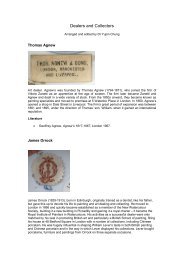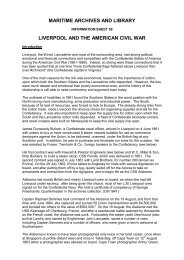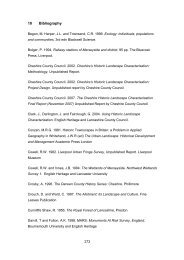Famille Noire porcelain - National Museums Liverpool
Famille Noire porcelain - National Museums Liverpool
Famille Noire porcelain - National Museums Liverpool
You also want an ePaper? Increase the reach of your titles
YUMPU automatically turns print PDFs into web optimized ePapers that Google loves.
Fig. 3 Saucershaped <strong>Famille</strong> <strong>Noire</strong> dish with fiveclawed dragons in the centre, LL31,<br />
copyright <strong>National</strong> <strong>Museums</strong> <strong>Liverpool</strong><br />
This saucershaped dish with an everted rim bears the central composition of fiveclawed<br />
dragons, chasing a pearl in clouds and flames. The decoration of the rim is reminiscent of the<br />
pieces seen before, as it displays blossoming flowers. The black ground on this piece is not as<br />
lustrous as in the already shown examples, but what strikes about this dish is the colour green<br />
which is presented in various shades.<br />
The green does not correspond to the wellknown hue of the original <strong>Famille</strong> Verte<br />
type as it is much more washed out and translucent. This one factor does not<br />
necessarily mean that the object is not originally Kangxi, however it seems to be one<br />
of very few examples of a large scale dish produced in the <strong>Famille</strong> <strong>Noire</strong> palette,<br />
which somehow singles it out, and enhances its uniqueness in terms of its<br />
authenticity. Roger Fry commented on the beauty of this plate comparing its matte<br />
quality to a Greek vase. Balance and rhythm of the design would show impeccable<br />
taste, and Fry further remarked that the plate was said to have belonged to the<br />
emperor Kangxi himself. From where Fry obtained that information we unfortunately<br />
do not know. 29<br />
In his catalogue to the Bennett collection, Gorer also categorised the piece as Kangxi<br />
and he remarked on its extraordinary size, being the largest dish of <strong>Famille</strong> <strong>Noire</strong><br />
known at the time. 30 The dish furthermore bears a Chenghua mark, which is not an<br />
uncommon feature of many black ground pieces and it was suggested by Jenyns that<br />
the potters tried to say ‘This vase is so good that it might have been the production of<br />
the Hsüan Tê or Ch’êng Hua.’ 31<br />
For certain, these marks led to many<br />
misconceptions amongst dealers, and Gorer often made the mistake in believing that<br />
he dealt with an original Ming piece, apparently unaware of the fact that pieces of<br />
such composition were not being produced during the Ming period.<br />
29<br />
Fry Roger, “Richard Bennett Collection of Chinese Porcelain”, in: The Burlington Magazine for<br />
Connoisseurs, Vol. 19, No. 99, June 1911, p. 134<br />
30<br />
Gorer, Catalogue of the collection of Old Chinese Porcelain formed by Richard Bennett, Nr.<br />
338<br />
31<br />
Jenyns, 1951, p. 36<br />
11


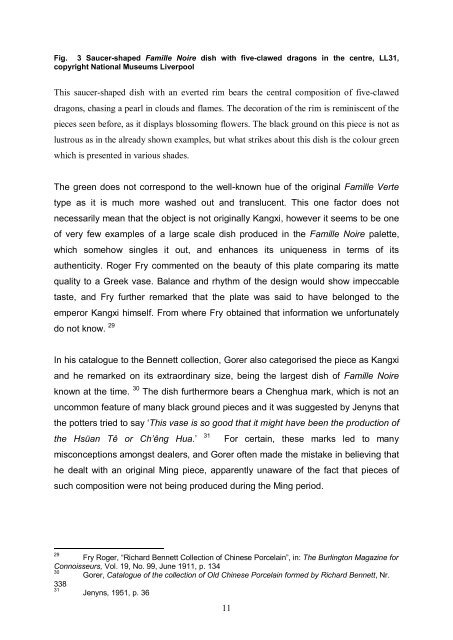
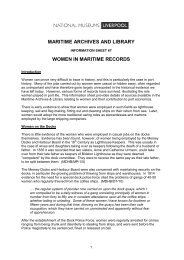
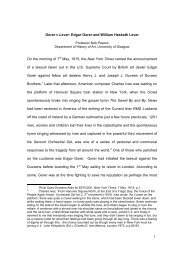
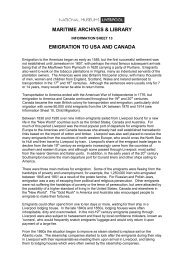
![Ancient Egypt trail [227kb .pdf] - National Museums Liverpool](https://img.yumpu.com/48998817/1/184x260/ancient-egypt-trail-227kb-pdf-national-museums-liverpool.jpg?quality=85)

